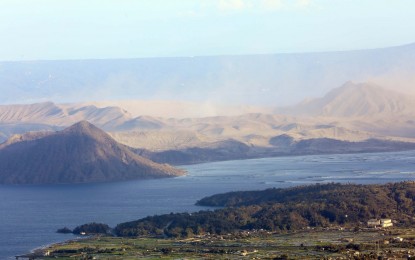
Taal Volcano (File photo)
MANILA – Amid the reported volcanic smog from the Taal Volcano over the weekend, raising its alert level is unlikely, the head of the Philippine Institute of Volcanology and Seismology (Phivolcs) said Monday.
"There is no need to raise its alert level to Level 2 because the monitored parameters are low," Phivolcs Director Teresito Bacolcol told the Philippine News Agency (PNA).
In a public briefing, Bacolcol noted that no volcanic earthquake was detected from 5 a.m. Sunday to 5 a.m. Monday. However, Phivolcs has logged 3,000 meters tall of voluminous emission in its 24-hour observation period.
Sulfur dioxide (SO2) emission, on the other hand, was 2,371 tonnes on Sept. 9.
"There was no volcanic earthquake since yesterday, in contrast to the six volcanic tremors recorded between Sept. 9 and 10," Bacolcol remarked.
Volcanic smog or vog consists of fine droplets containing volcanic gas which is acidic and can cause irritation of the eyes, throat and respiratory tract in severities depending on the gas concentrations and durations of exposure.
At least 36 students from the Bayorbor National High School and Bayorbor Senior High School in Mataasnakahoy, Batangas were sent to a rural health unit on Friday after experiencing chest pains and difficulty in breathing due to vog.
Bacolcol said that in contrast with ordinary fog, vog has sulfur dioxide, causing health effects depending on the duration of exposure and gas concentration.
This mainly affects those with health conditions such as asthma, lung and heart diseases, as well as young and older people and pregnant women, he added.
The Phivolcs chief said the SO2 emission is low at an average of 2,371 tons per day, compared to 20,000 tons per day recorded in the past.
"What happened was a result of thermal inversion which was also the reason why there was smog in Metro Manila. It is a weather situation where a layer of warm air would sit on top of a cooler air near the ground. As a result, pollution and S02 are trapped," he said. (PNA)
